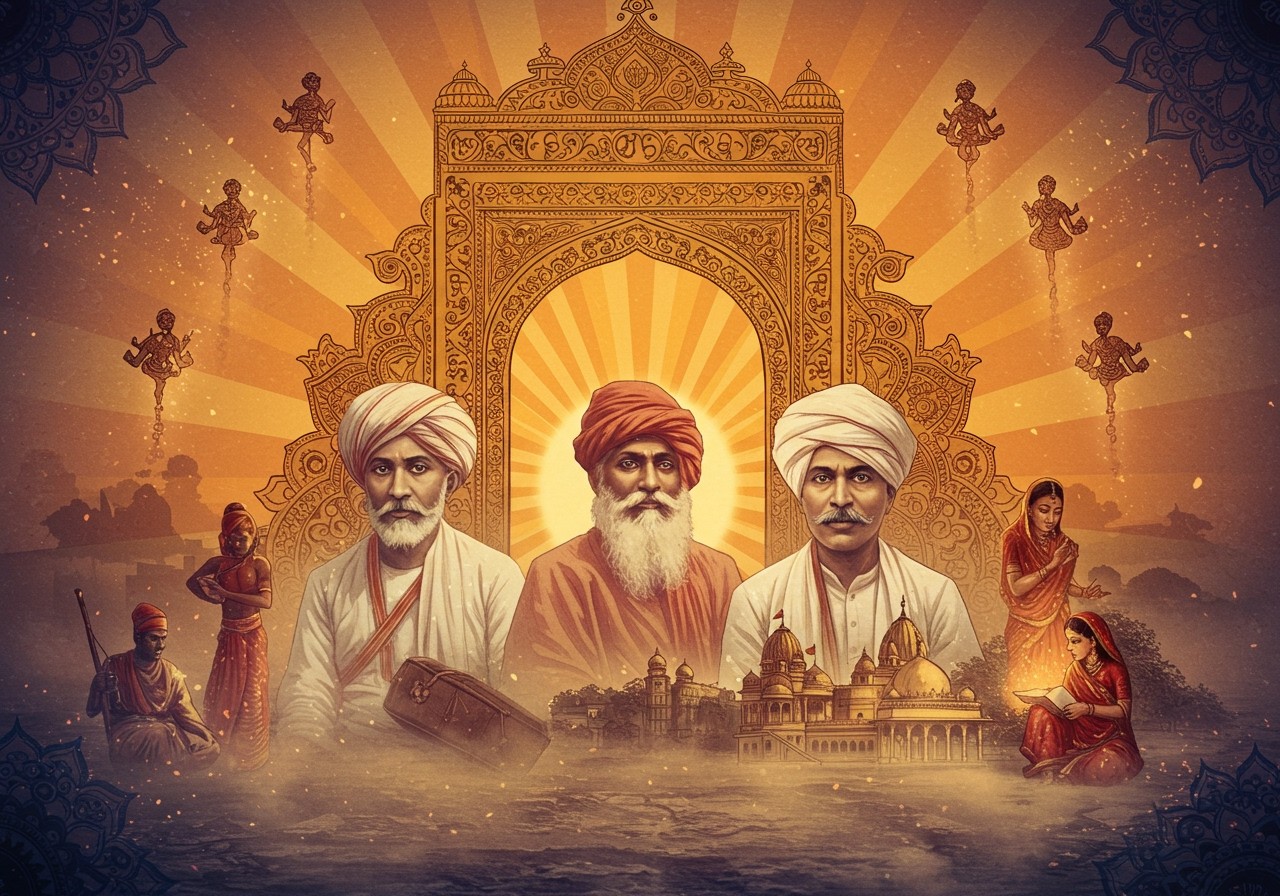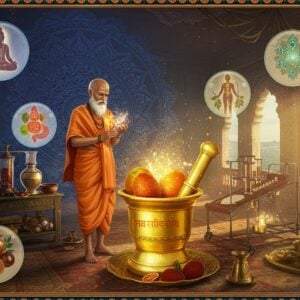
The 19th century marked a period of profound transformation for Hinduism in India. Numerous reform movements emerged, tackling social inequalities and revitalizing religious practices. These movements played a crucial role in shaping modern Hindu thought and continue to resonate with culturally rooted Indians who cherish their traditions.
The Winds of Change: 19th-Century India
Under British colonial rule and the influx of Western ideas, 19th-century India experienced a complex interplay of tradition and modernity. Hindu society grappled with issues like caste discrimination, gender inequality, and deep-rooted superstitions. This era became the crucible for change, giving rise to numerous reform movements that sought to address these challenges and revitalize Hindu society. The Indian Renaissance, a period of intellectual and cultural awakening, played a significant role in inspiring these reform efforts.
Reform Movements that Reshaped Hinduism
Several key movements emerged during this period, each with its own distinct approach to reform:
-
Brahmo Samaj (1828)
Founded by Raja Ram Mohan Roy, often hailed as the “Father of the Indian Renaissance,” the Brahmo Samaj aimed to purify Hinduism by challenging practices like Sati, child marriage, and caste oppression. Roy championed women’s rights and education, advocating for a more rational and ethical form of Hinduism.
He questioned idol worship and polytheism, emphasizing a monotheistic approach. The Brahmo Samaj provided a platform for progressive thought, paving the way for further reforms within Hinduism.
-
Arya Samaj (1875)
Swami Dayanand Saraswati established the Arya Samaj, emphasizing a return to the Vedic scriptures. He denounced idolatry, polytheism, and ritualistic practices that he believed were not rooted in the Vedas. The Arya Samaj advocated for social equality, condemning untouchability and advocating for women’s upliftment.
Saraswati’s focus on Vedic principles resonated with many who sought a purer form of Hinduism based on ancient scriptures.
-
Satyashodhak Samaj (1873)
Founded by Jyotirao Phule, the Satyashodhak Samaj focused on social justice, education, and empowering marginalized communities. Phule tirelessly campaigned against caste discrimination and worked towards creating a more equitable society. He recognized the transformative power of education and believed it held the key to social upliftment.
His efforts resonated particularly with those marginalized by the caste system, providing hope for a more just and inclusive society.
-
Prarthana Samaj
Based in Maharashtra, the Prarthana Samaj championed progressive social reforms like widow remarriage and promoted education for all, irrespective of caste or gender. This movement contributed significantly to social change within Maharashtra, advocating for a more inclusive and just society.
Their advocacy for women’s rights and social equality was a significant step towards modernizing Hindu society.
-
Ramakrishna Mission
Established by Swami Vivekananda, a disciple of Sri Ramakrishna, the Ramakrishna Mission focused on spiritual development alongside social service. Vivekananda emphasized the importance of serving humanity as a form of worship.
The Mission’s teachings of universal love and tolerance fostered interfaith harmony and inspired countless individuals to dedicate themselves to selfless service.
-
Theosophical Society
The Theosophical Society played a unique role by reviving interest in Indian philosophy and spirituality. It promoted interfaith dialogue and encouraged a deeper understanding of the world’s religions.
Its emphasis on spiritual exploration contributed to a renewed appreciation of India’s rich philosophical heritage.
The Guiding Lights of Reform
These reform movements were led by visionary leaders who left an indelible mark on Hinduism:
-
Raja Ram Mohan Roy
A staunch advocate for social justice and religious reform, Roy’s efforts laid the groundwork for modernizing Hindu society. His advocacy for women’s rights and education remains an inspiration to reformers even today.
Roy’s contributions earned him the title “Father of the Indian Renaissance” and solidified his legacy as a pivotal figure in shaping modern Hindu thought.
-
Swami Dayanand Saraswati
Saraswati’s commitment to Vedic teachings and social reform brought significant changes to Hindu society. His emphasis on rationality and equality paved the way for a more inclusive and just social order.
Through his teachings and the Arya Samaj, he ignited a renewed interest in the Vedas and their relevance to contemporary life.
-
Jyotirao Phule
Phule’s relentless fight for social justice and empowerment of the marginalized remains a powerful legacy. Through the Satyashodhak Samaj, he worked tirelessly to uplift oppressed communities and challenge traditional hierarchies.
His dedication to social reform and education continues to inspire those working towards a more equitable society.
-
Ishwar Chandra Vidyasagar
A champion of progress, Vidyasagar worked tirelessly for social equality, education, and religious tolerance. His efforts to promote widow remarriage and challenge rigid social norms were instrumental in bringing about meaningful change.
Vidyasagar’s unwavering commitment to social reform positioned him as a key figure in India’s journey towards modernity.
-
Pandita Ramabai
Ramabai’s dedication to women’s rights and education had a transformative impact on Indian society. Through the Arya Mahila Samaj, she empowered women and fought against the oppressive practice of child marriage.
Her pioneering work in advocating for women’s education and social upliftment left a lasting legacy in the fight for gender equality.
A Legacy of Reform and Revival
These 19th-century reform movements continue to shape modern Hinduism. They challenged traditional hierarchies, promoted social equality, and integrated rational thought into Hindu philosophy. The teachings of these reformers have influenced numerous modern Hindu organizations and continue to inspire individuals to strive for a more just and compassionate world.
Poojn.in: Connecting You with Tradition and Reform
At Poojn.in, we understand the significance of these reform movements and their impact on modern Hindu practices. We offer a wide selection of authentic puja items and educational resources to help you connect with your heritage:
- Traditional Puja Items: Discover traditional puja items that align with reformed practices, enabling you to perform rituals with reverence and authenticity.
- Pure Copper and Brass Items: Find high-quality copper and brass items for your puja needs, crafted with precision and care.
- Eco-Friendly Alternatives: Explore eco-friendly options for traditional offerings, allowing you to practice your faith while respecting the environment. Check our range of low-value, eco-friendly products.
- Educational Resources: Delve deeper into Hindu philosophy and rituals through our informative articles and resources. Learn about the rich tapestry of Hindu traditions from around the world.
Convenient Access and Support:
- Easy Online Ordering: Shop conveniently online at www.poojn.in.
- Expert Guidance: Call us at 03369029784 for personalized guidance on selecting the right puja items.
- WhatsApp Support: Connect with us on WhatsApp at 9476142738 for quick assistance.
- Pan-India Delivery: We offer reliable pan-India delivery of all our authentic products.
Embracing the Legacy: Tradition and Modernity
The 19th-century reform movements offer invaluable wisdom for navigating the complexities of modern life. They remind us of the importance of balancing tradition with progress, adapting our practices while staying true to our values.
For culturally rooted Indians, understanding these movements is a journey of self-discovery, connecting us with our heritage and inspiring us to create a more inclusive and just society. Let us honor the legacy of these reformers by embracing their values of equality, education, and social justice. At Poojn.in, we are committed to supporting you on this journey, providing you with the resources and inspiration you need to connect with your faith in a meaningful way.
FAQs: Understanding Hindu Reform Movements
What sparked the 19th-century Hindu reform movements? These movements emerged in response to social ills like caste discrimination, child marriage, and the subjugation of women. Reformers aimed to create a more just and equitable society.
Who were some prominent figures in these movements? Key figures include Raja Ram Mohan Roy (Brahmo Samaj), Swami Dayanand Saraswati (Arya Samaj), Jyotirao Phule (Satyashodhak Samaj), and Swami Vivekananda (Ramakrishna Mission).
What was the Brahmo Samaj’s primary focus? The Brahmo Samaj advocated for monotheism, rejected idol worship, and championed women’s rights and education, seeking to purify Hindu practices.
How did the Arya Samaj contribute to reform? The Arya Samaj emphasized a return to Vedic teachings, opposing caste discrimination and promoting education for all.
What lasting impact did these movements have? These movements laid the foundation for a more inclusive and progressive Hindu society, influencing modern practices and inspiring ongoing efforts toward social justice and equality.


